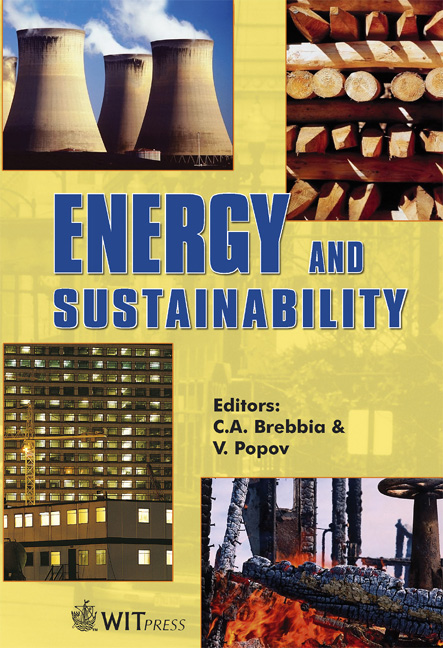Efficiency Improvement Of The Hot Blast Generating System By Waste Heat Recovery
Price
Free (open access)
Transaction
Volume
105
Pages
9
Published
2007
Size
692 kb
Paper DOI
10.2495/ESUS070121
Copyright
WIT Press
Author(s)
Pei-Hsun Lin, Pai-Hsiang Wang, Hui-Tien Chen & Wei-Lun Chung
Abstract
To meet the increasing demand for energy saving and sustainable CO2 reduction, a heat-pipe heat exchanger has been applied in the hot blast generating system to recover the flue gas sensible heat for the purpose of fuel gas preheating. In this paper, the performance evaluation method for the hot blast generating system is proposed and used to investigate the fuel gas preheating effect on the system’s thermal efficiency. Experimental observation revealed that 3.1% of the efficiency improvement was achieved by the application of waste heat recovery. Accordingly, the energy consumed to enhance the blast air temperature was diminished by 0.115 kJ/°C-Nm3. In addition to energy saving, the fuel gas preheating also led to the reduction of the enrichment gas depletion rate. Based upon the field test results, the records indicated that the implementation of the flue gas heat recovery scheme in the hot blast generating process resulted in a saving of fuel consumption by 822 l/h on an oil equivalent basis. The benefits of energy saving over 1.9 million US dollars and the CO2 reduction 15,000 tons can be achieved annually. Keywords: waste heat recovery, hot stove, energy saving, thermal efficiency. 1 Introduction Hot stoves are thermal regenerators applied to produce hot blast air in blast furnace iron making process. In China Steel Corporation, the hot blast air generating system for the No.2 Blast Furnace consists of four hot stoves. Each stove is operated alternatively with on-gas and on-blast cycles to deliver stable hot blast air flow to blast furnace under specific conditions. During the on-gas
Keywords
waste heat recovery, hot stove, energy saving, thermal efficiency.





